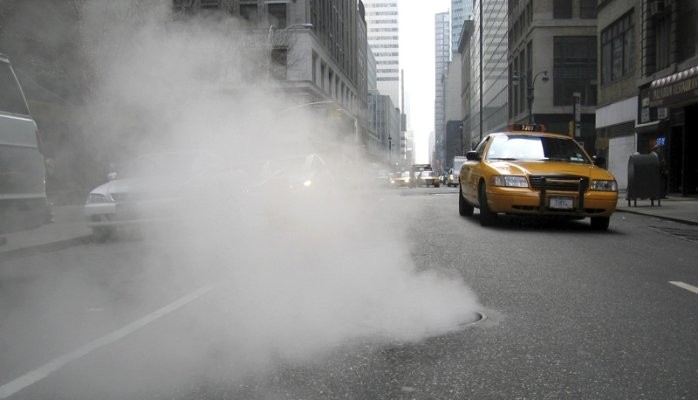
It's in the water--DC RPS considers a new source for cooling and heating
In the densely packed megacities of the future, warming climates and rising incomes will make cooling a decisive factor--- for energy conservation and quality of life. By mid-century people will use more energy for cooling than heating. According to the Intergovernmental Panel on Climate Change (IPCC), energy demand for residential air conditioning in summer is projected to increase more than 30-fold by the end of the century: from nearly 300 terawatt-hours (TWh) in 2000 to about 4,000 TWh in 2050 and more than 10,000 TWh in 2100.
100% renewables requires more than solar and wind
Since the Paris Agreement in December, cities are thinking beyond solar and wind with a view to transitioning to 100% renewable energy sources. One of the cities recognized at the conference for groundbreaking energy procurement programs, Washington DC, is looking to tap into another highly resilient source of renewable energy-- municipal sewage waste heat. “The District of Columbia is proud to be recognized among global cities that are truly at the vanguard of fighting climate change,” said Mayor Bowser. "To meet its GHG reduction and renewable energy goals, DGS [DC's Government Services Group] will need to aggressively expand efficiency solutions and the use of clean energy."
Targeting Cooling and Heating
On May 12, the District of Columbia Commission on Climate Change and Resiliency will consider adding a new renewable resource for cooling and heating-- municipal sewers. The District of Columbia's Renewable Portfolio Standard (RPS) requires District energy suppliers to obtain renewable energy credits (RECs) proportional to the energy they sell. If the new proposal is accepted, “Tier 1” renewable resources would include wastewater thermal energy along with solar, wind, biomass, landfill gas, wastewater treatment gas, and geothermal.
WWTE integrates component technologies that have been proven for decades. Both Huber’s ThermWin and International Wastewater’s SHARC system have been widely applied in Europe and Canada. ThermoWatt out of Budapest (Hungary) is one of many emerging companies offering robust WWTE solutions. These modular technologies are cost-efficient for buildings requiring at least 100 tons of cooling, and efficiencies build beyond that. WWTE requires nearby access to at least 100-150 gallons per minute of sewage flow. Given sufficient heating and cooling needs and access to sufficient sewage flow, WWTE can replace conventional HVAC for office buildings, hospitals, hotels and campuses. For example, at Marie Reed Elementary in Washington DC, engineering analysis estimates that Huber’s ThermWin WWTE-driven HVAC would save 364,692 kWhs of electricity, 24,508 Therms of natural gas and 4,480,000 gallons of water.
At present, several US states, including DC, Massachusetts, and New York, are assessing the possibility of using wastewater energy recovery (WWER) as part of their efforts to replace fossil fuels with renewables. DC Water estimates that its sewage flow can generate 160-200 KW of energy. A study conducted in 2012 in New York City concluded that if 5°F of heat were removed from wastewater flowing through the sewer pipes beneath the streets over the course of 1 year, $90,000,000 worth of energy could be recovered.
As US states like Hawaii and organizations like the US Navy and Apple aim toward high levels of renewable energy, WWTE will play a critical role in providing peak energy services.
Wastewater thermal energy (WWTE) systems transfer or absorb heat through the conductive piping, from the wastewater to a working fluid in a closed loop. Regardless of above ground temperatures, sewage temperatures remain relatively constant year-round. These systems are completely sealed and odor-free, making them a safe and effective means of tapping into a sustainable energy source. WWTE replaces conventional HVAC systems, saving significant energy and fresh water.
As cities struggle to scale up renewable energy sources and contend with unpredictable supply from solar and wind, WWTE systems provide a critical new resource for renewable energy sources at peak periods. Regardless of whether the sun is shining and the wind is blowing, sewage flows match peak human activities.